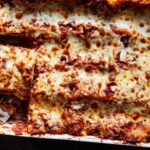Navigating airport security can be stressful, especially when you’re carrying food. Understanding the Transportation Security Administration (TSA) guidelines on what food items are allowed can save you time and hassle. This guide provides a detailed overview of TSA’s food regulations, helping you confidently pack your snacks and meals for your journey.
General Rules for Bringing Food Through Airport Security
The TSA generally allows solid food items in both carry-on and checked baggage. However, there are specific rules for liquids and gels. If a food item is considered a liquid or gel, it must adhere to the 3-1-1 rule: each item must be 3.4 ounces (100 milliliters) or less and placed in a single, quart-sized bag.
Examples of Solid Foods Allowed
- Sandwiches
- Fruits (apples, bananas, oranges)
- Vegetables (carrots, celery sticks)
- Snacks (chips, crackers, cookies)
- Solid chocolate
- Nuts and seeds
Examples of Liquid or Gel Foods with Restrictions
- Peanut butter
- Jams and jellies
- Dips and spreads
- Yogurt
- Soups
- Sauces
Specific Food Items and TSA Regulations
While the general rules apply, some food items have specific guidelines due to their nature or necessity.
Baby Food and Formula
Formula, breast milk, toddler drinks, and baby/toddler food (including puree pouches) in quantities greater than 3.4 ounces or 100 milliliters are allowed in carry-on baggage and do not need to fit within a quart-sized bag. These items are considered medically necessary liquids. This also applies to breast milk and formula cooling accessories, such as ice packs, freezer packs, and gel packs, regardless of the presence of breast milk.
You do not need to have your child or infant present to bring breast milk, formula, and/or related supplies.
How to Handle Baby Food and Formula at Security
Inform the TSA officer at the beginning of the screening process that you are carrying formula, breast milk, toddler drinks, and baby/toddler food in excess of 3.4 ounces. Remove these items from your carry-on bag to be screened separately from your other belongings. TSA officers may need to test the liquids for explosives or concealed prohibited items.
To expedite the screening process, it is recommended that formula and breast milk be transported in clear, translucent bottles and not plastic bags or pouches. Liquids in plastic bags or pouches may not be able to be screened by Bottle Liquid Scanners, and you may be asked to open them (if feasible) for alternate screening such as Explosive Trace Detection and Vapor Analysis for the presence of liquid explosives. Screening will never include placing anything into the medically necessary liquid.
Medications and Medically Necessary Foods
Medications and medically necessary foods are also exempt from the 3-1-1 rule. If you require specific foods for medical reasons, you can bring them in larger quantities. It’s advisable to have a doctor’s note or prescription to verify the necessity.
Ice Packs and Cooling Accessories
Ice packs, freezer packs, frozen gel packs, and other accessories required to cool formula, breast milk, toddler drinks, and baby/toddler food are allowed in carry-ons, along with liquid-filled teethers. If these items are partially frozen or slushy, they are subject to the same screening as described above.
Tips for a Smooth Screening Process
- Be Prepared: Know the rules regarding the food items you’re carrying.
- Declare Food Items: Inform the TSA officer about any food items that might require additional screening.
- Pack Smart: Pack food items in an easily accessible location for inspection.
- Use Clear Containers: If possible, use clear containers for liquids and gels to expedite screening.
- Consider TSA PreCheck: TSA PreCheck can expedite the security process.
Additional Resources
For more information, visit the TSA website or contact TSA Cares online at http://www.tsa.gov/contact-center/form/cares or by phone at (855) 787-2227 or federal relay 711. Also, see traveling with children for more information.
Conclusion
Knowing the TSA guidelines on bringing food through airport security can significantly reduce travel-related stress. By following these rules and preparing adequately, you can ensure a smoother and more pleasant travel experience. Safe travels!
